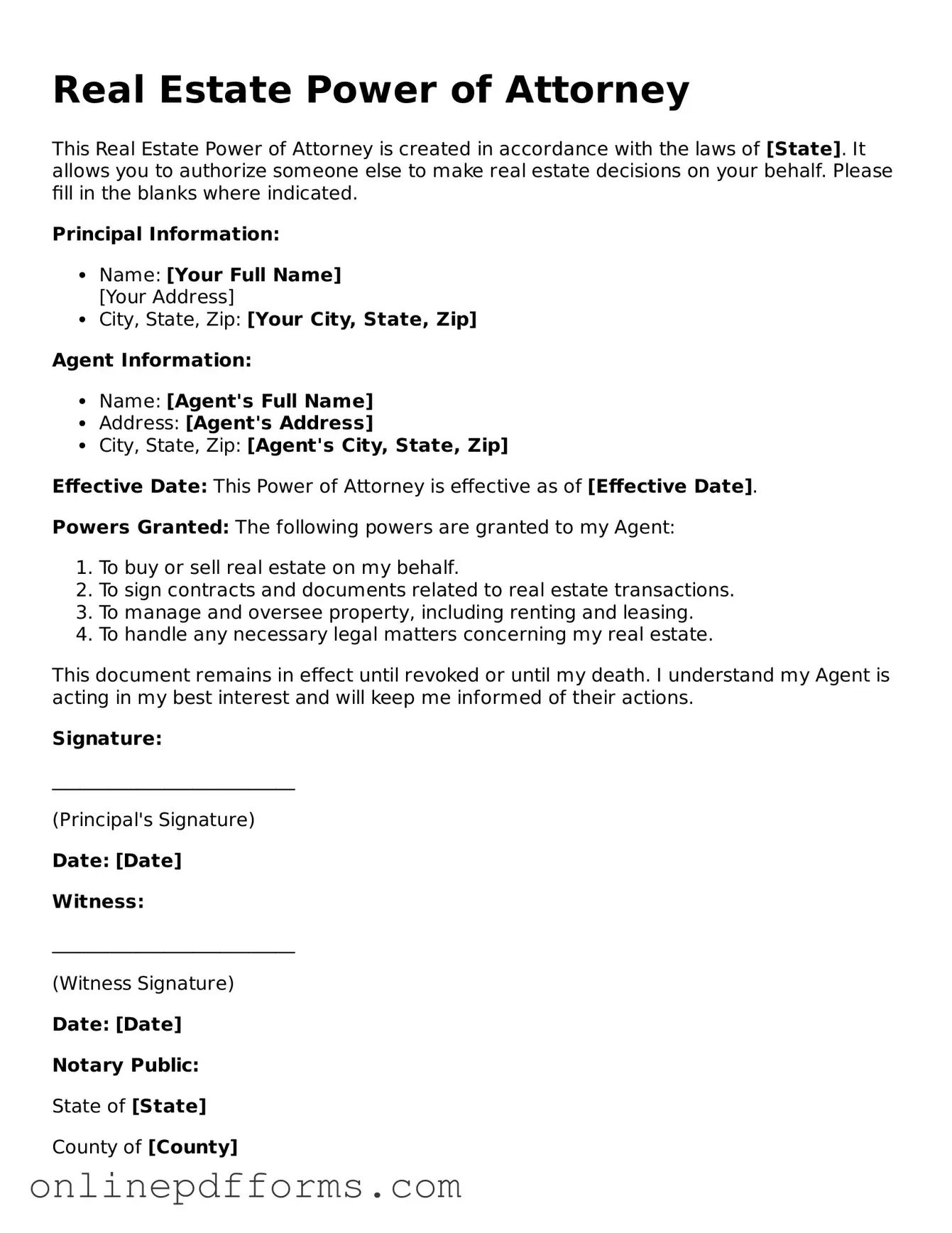The Real Estate Power of Attorney (POA) is similar to a General Power of Attorney. Both documents grant authority to an agent to act on behalf of the principal. However, while a General POA can cover a wide range of decisions, a Real Estate POA specifically focuses on real estate transactions. This includes buying, selling, or managing property. The targeted nature of the Real Estate POA makes it particularly useful for individuals who want to delegate authority for property-related matters only.
When you need to temporarily designate someone else to handle your child's care, understanding the rules around the Power of Attorney for a Child application process is crucial. This form provides the legal framework to empower another individual to make necessary decisions regarding your child's wellbeing and upbringing during your absence.
Another document akin to the Real Estate Power of Attorney is the Durable Power of Attorney. This type of POA remains effective even if the principal becomes incapacitated. Similar to the Real Estate POA, it can be tailored to specific areas of authority, including real estate matters. The key difference lies in the durability aspect, which ensures that the agent can continue to act on behalf of the principal during periods of incapacity, thus providing peace of mind in managing real estate affairs.
A Healthcare Power of Attorney shares similarities with the Real Estate Power of Attorney in that both allow an individual to designate someone to make decisions on their behalf. However, the Healthcare POA is specifically for medical and health-related decisions. Like the Real Estate POA, it empowers the agent to act according to the principal's wishes, but the focus is on health care rather than property management. This document is crucial for ensuring that health decisions align with the principal's values and preferences.
The Limited Power of Attorney also bears resemblance to the Real Estate POA. This document grants authority for specific tasks or transactions, rather than a broad scope of powers. In the context of real estate, a Limited POA might only authorize an agent to sell a particular property or handle a specific transaction. This specificity can be beneficial for individuals who wish to maintain control over their affairs while delegating certain responsibilities to trusted individuals.
A Trust Agreement is another document that shares common ground with the Real Estate Power of Attorney. Both involve designating someone to manage assets on behalf of another. However, a Trust Agreement typically involves the transfer of property into a trust, while a Real Estate POA allows an agent to act on behalf of the principal without transferring ownership. Trusts can provide long-term management and distribution of assets, while a POA is often more immediate and transactional in nature.
The Quitclaim Deed is similar in that it is a legal document used in real estate transactions. It allows a property owner to transfer interest in a property to another person without any guarantees about the title. While the Real Estate POA enables an agent to execute such a deed on behalf of the principal, the Quitclaim Deed itself is the instrument used to convey ownership. Both documents are essential in the realm of property transfers, but they serve different purposes within the process.
Lastly, a Bill of Sale can be compared to the Real Estate Power of Attorney in that it is a legal document used to transfer ownership of property. While a Bill of Sale is typically used for personal property rather than real estate, it serves a similar function in formalizing the transfer of ownership. The Real Estate POA may empower an agent to execute a Bill of Sale for personal property associated with a real estate transaction, illustrating the interconnectedness of various legal documents in property management.
